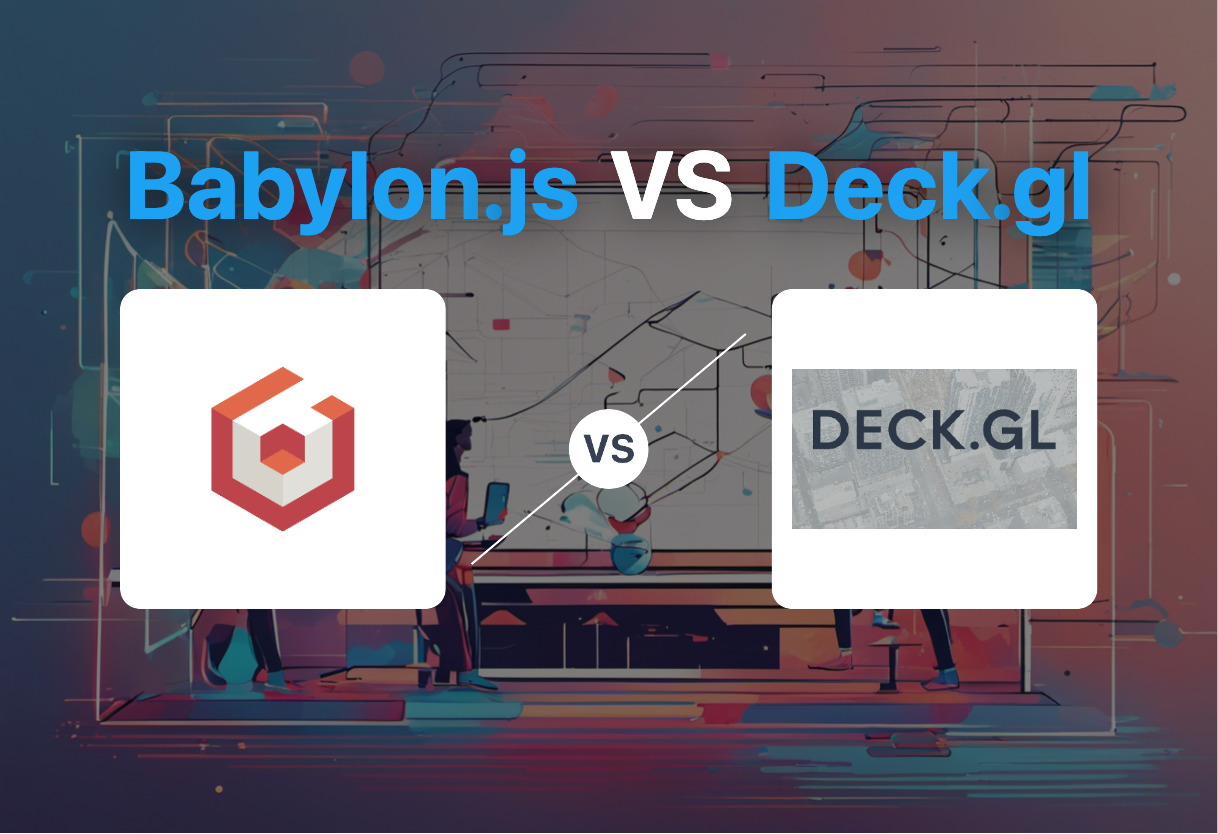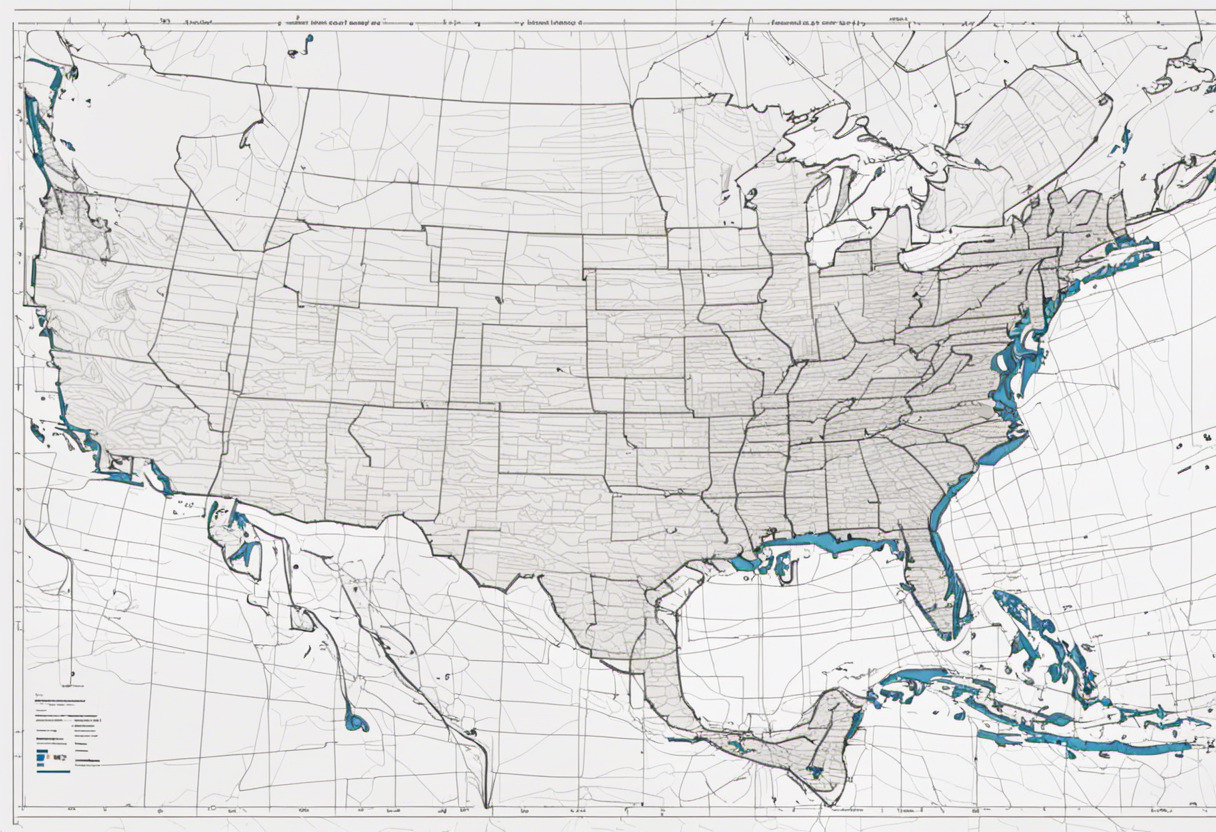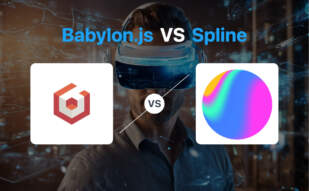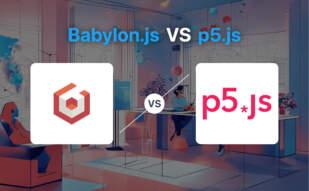For high-performance, large-scale data visualizations, pick deck.gl without hesitation. Opt for Babylon.js if immersion into real-time 3D models and projects, with intricate physics simulations, is your objective.

Key Differences Between Babylon.js and Deck.gl
- Babylon.js provides a real-time 3D engine for immersive, complex projects involving graphics rendering, animation, and physics simulations whereas deck.gl is a data visualization tool specifically designed for rendering large-scale data.
- Babylon.js offers an API-friendly environment and requires coding in TypeScript or JavaScript. Deck.gl, on the other hand, leverages JSON data to compose visual layers and offers a wider compatibility: Script Tag, NPM Module, Pure JS, React, Python.
- Deck.gl boasts interactive event handling, including picking, highlighting, and filtering, while Babylon.js relies on plugin physics engines for simulating collisions and physical reactions.
- While both are open-source and encourage contributions, Babylon.js was developed by Microsoft and Deck.gl is a part of the vis.gl under the OpenJS Foundation.
| Comparison | Babylon.js | deck.gl |
|---|---|---|
| Type | Real Time 3D Engine | Large-Scale Data Visualization Tool |
| Initial Release | 2013 | Data Not Available |
| Recent Stable Release | 5.3.0 | Data Not Available |
| Written In | TypeScript, JavaScript | Data Not Available |
| License | Apache License 2.0 | Data Not Available |
| 3D Modeling Process | Polygon Modeling With Triangular Faces | Data Not Available |
| Physical Rendering | Yes, Uses Physically Based Rendering And Post-Processing Methods | Data Not Available |
| Physics Engines | Cannon.js And Oimo | Data Not Available |
| Use Cases | Virtual Worlds, Crime Data Visualization, Education In Medicine, Kinect On Web | Large Data Visualization |
| API Accessibility | Yes | Data Not Available |
| High-Performance | Data Not Available | Yes, WebGL2-Powered |
| Integration With Map Providers | Data Not Available | Yes, With Major Basemap Providers |
| Customizability | Data Not Available | Yes, Flexible APIs And Extendable Core Classes |
| Usage Modes | Data Not Available | Pure JS, NPM Module, Script Tag, React, Python |
What Is Babylon.js and Who’s It For?
Babylon.js is a powerful, open-source, real-time 3D engine built for the modern web. Originally developed by David Catuhe and now maintained by Microsoft and various contributors, it utilizes HTML5 for breathtaking 3D experiences right within your browser window. Babylon.js is intended for developers, educators, and artists alike, with its user-friendly API and extensive build applications spanning from virtual worlds and military training to medical education and fashion avatars.

Pros of Babylon.js
- API accessible for user projects
- Comprehensive use-case versatility
- Open-source under Apache License 2.0
Cons of Babylon.js
- Limited use of constructive solid geometry
- Dependency on WebGL supporting browsers
- Requires understanding of TypeScript or JavaScript
What Is deck.gl and Who’s It For?
Deck.gl is an innovative data visualization tool designed to handle large-scale information with ease and efficiency. Thanks to its high-performance, WebGL2-powered framework, deck.gl offers the means to create beautiful, interactive, and sizeable data visualizations. It’s meant for data scientists, GIS professionals, and programmers, providing an esoteric array of visual layer choices, viewing options, and cartographic projections. Moreover, its high customizability and integration with other platforms make it a versatile tool.

Pros of deck.gl
- Effective handling of large-scale data
- Highly customizable with flexible APIs
- Can be integrated with many basemap providers
Cons of deck.gl
- Requires certain degree of programming expertise
- Performance may lag on older machines
- Limited in utility without third-party integrations
Babylon.js vs Deck.gl: Pricing
Both Babylon.js and Deck.gl are open-source projects and free to use, driven by contributions and well-supported user communities.
Babylon.js
As an open-source 3D engine developed by Microsoft employees and other contributors, Babylon.js is distributed under the Apache License 2.0. Its use, including access to its entire source code on Github, comes free of charge. This encourages community contributions and gives users the flexibility to use and modify the code as required, within the terms of the Apache license.
Deck.gl
Deck.gl, a large-scale data visualization tool, is also an open-source project, part of the vis.gl umbrella under the OpenJS Foundation. Like Babylon.js, it promotes community contributions and user independence. Again, there are no costs associated with using Deck.gl, allowing interested parties to freely access and utilize its robust visualization capabilities.
Code Examples for Babylon.js & Deck.gl
Babylon.js
This code snippet generates an imaginative animation displaying a planet with a rotating satellite using Babylon.js. Background requirement: Import Babylon.js library.
let createScene = function(){
var scene = new BABYLON.Scene(engine);
var camera = new BABYLON.ArcRotateCamera("Camera", Math.PI / 2, Math.PI / 2, 2, BABYLON.Vector3.Zero(), scene);
camera.attachControl(canvas, true);
var light1 = new BABYLON.HemisphericLight("light1", new BABYLON.Vector3(1, 1, 0), scene);
var sphere = BABYLON.MeshBuilder.CreateSphere('sphere', {segments:16, diameter:2}, scene);
var moon = BABYLON.MeshBuilder.CreateSphere('moon', {segments:6, diameter:0.5}, scene);
moon.position.x = 1.5;
sphere.rotation.y = Math.PI;
scene.registerBeforeRender(function () { moon.rotate(BABYLON.Axis.Y, 0.01, BABYLON.Space.LOCAL); });
return scene;
};Deck.gl
The following code represents an advanced scatterplot layer on Deck.gl. Dependency: Ensure Deck.gl is properly installed and its corresponding libraries imported.
import {ScatterplotLayer} from '@deck.gl/layers';
import {DataFilterExtension} from '@deck.gl/extensions';
new ScatterplotLayer({
id: 'scatter-plot',
data: 'https://raw.githubusercontent.com/uber-common/deck.gl-data/master/examples/layers.json',
pickable: true,
opacity: 0.8,
radiusScale: 6,
radiusMinPixels: 1,
radiusMaxPixels: 100,
getPosition: d => d.position,
getRadius: d => d.radius,
extensions: [new DataFilterExtension({filterSize: 1})],
getFilterValue: d => d.time,
filterRange: [100, 200]
});The Final Verdict | Babylon.js or Deck.gl
If you’re wondering between Babylon.js and Deck.gl, here’s the insider’s take.
3D Graphics Designers
Babylon.js is your best bet if you are a 3D graphics designer. Its real-time engine, originally devised by Microsoft wizards, offers you an intricate 3D modeling process, a slew of plugins for physics simulations, and the ability to create stunning, photo-realistic images.

Data Visualization Specialists
Without a shred of doubt, Deck.gl reigns supreme if large-scale data visualization is your game. Heralded for its robust WebGL2-powered performance and flexibility in handling vast data sets, it simplifies making a visual feast out of your heaps of JSON data.

App and Game Developers
If you’re a dev in the animation-laden, immersive applications world, then Babylon.js is likely your winning ticket. Decked out with frame animation objects and character skeletons for smooth movement, it’s a solid choice for crafting vibrant, engaging digital universes.

In the Babylon.js versus Deck.gl duel, your choice boils down to the nature of your mission: Babylon.js for its riveting 3D graphic prowess, and Deck.gl if you’re on a data visualization crusade. App and game developers with a flair for animation will meet their match in Babylon.js.
Hannah Stewart
Content writer @ Aircada, tech enthusiast, metaverse explorer, and coffee addict. Weaving stories in digital realms.





